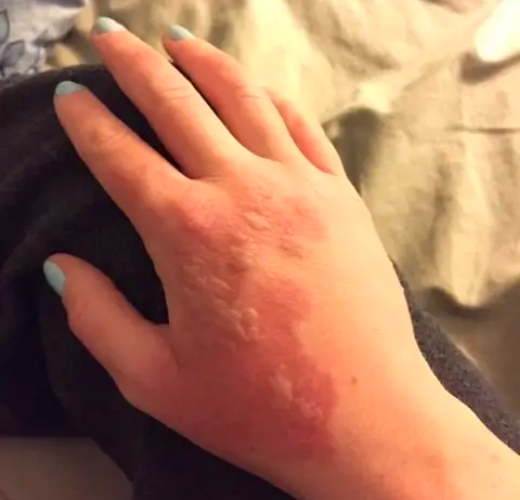What is phytophotodermatitis?

This tongue-twisting skin reaction is very common during late spring and summer as everyone starts to enjoy more time outdoors. Phytophotodermatitis occurs when certain plant-based compounds come in contact with the skin that is exposed to the sun, resulting in a rash of irregularly shaped, itchy, blister-like patches.
A classic example of phytophotodermatitis would be experiencing a reaction after citrus comes in contact with your skin while being out in the sun–such as squeezing a lime into your margarita (or your cocktail spilling onto your arms or legs). However, in addition to citrus fruits, vegetables and herbs like celery, spicy peppers, carrots, dill, mustard, parsley and parsnips can cause phytophotodermatitis as well.
The root cause of phytophotodermatitis is a class of compounds called furocoumarins and a derivative called psoralens–and fruits and vegetables aren’t the only source. In fact, psoralens are extensively understood by dermatologists, and are often used to treat conditions such as vitiligo and psoriasis.
I bring this up because I’ve personally/professionally seen skincare play a role in the development of phytophotodermatitis. For example, when extracting bakuchiol for skincare use, it’s important that the manufacturer removes any psoralens or other ingredient compounds that can contribute to photosensitivity. This is because psoralens react with UVA light and can cause an intense skin reaction.
Citrus-infused libations and skincare aren’t the only triggers for phytophotodermatitis. If you’re an avid gardener and harvesting any of the above mentioned vegetables, it’s important to take preventative measures. These include liberal sunscreen use, and wearing gloves while tending to your crops (no matter how big or small their yield may be).
Phytophotodermatitis is a self-limited skin reaction with no immune system component, which means it will resolve on its own. However, after the initial redness and swelling associated with the rash subsides within a week, brown hyperpigmentation can persist for weeks to months. Unfortunately the only treatment for this post-phytophotodermatitis discoloration is time, but minimizing sun exposure can help promote its fading.

Post-phytophotodermatitis discoloration.
Again, phytophotodermatitis is a harmless skin reaction, but it can have unwanted aesthetic side effects. In addition to proper sunscreen use, washing the skin after exposure to known phytophotodermatitis triggers can help prevent the likelihood that a reaction will occur.
Keep this in mind when you order your next poolside cocktail–and anytime you’re handling fruits and vegetables in the sun.


